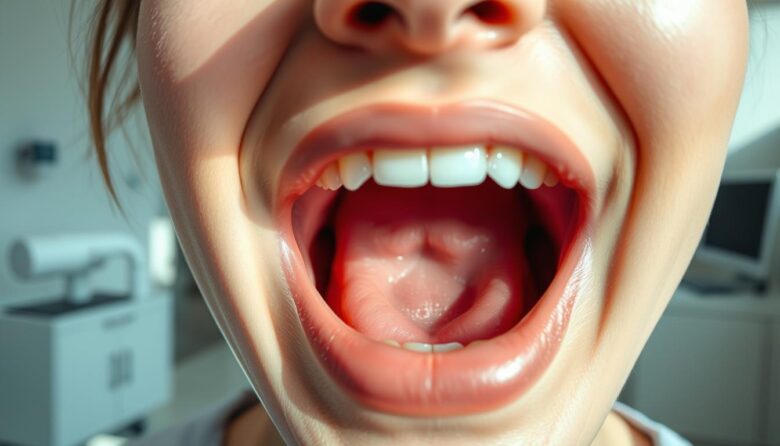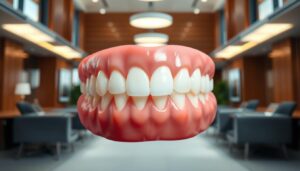The appearance of your gums can tell you a lot about your well-being. Healthy gums typically have a pink hue, reflecting good blood flow and strong tissue attachment. This is a positive sign of a well-maintained mouth.
Changes in the shade of your gums, such as redness, yellowness, or darkening, may signal underlying issues. These variations could point to inflammation or other concerns that need attention. Monitoring these changes can help detect problems early.
Factors like melanin levels and skin tone can also influence the natural color of gums. However, sudden shifts in hue should not be ignored. Regular dental check-ups and vigilant care are essential for maintaining both oral and overall health.
Spotting the Signs: Recognizing Healthy and Unhealthy Gum Colors
Observing the hue of your gums can provide early warnings about potential issues. Healthy gums typically have a consistent pink tone, indicating good blood flow and strong tissue attachment. However, changes in shade may signal underlying concerns that require attention.
Understanding the Spectrum: Pink vs. Red Gums
Pink gums are a sign of well-maintained hygiene and proper care. They reflect a healthy balance of brushing, flossing, and regular dental visits. On the other hand, red gums often indicate inflammation or infection. This change in hue could be a sign of gingivitis or other issues that need prompt attention.
Exploring Brown, Yellow, and Black Tints
Brown gums can be natural for individuals with higher melanin levels or increased sun exposure. However, sudden darkening may be a concern. Yellow tints often suggest early stages of gum disease, such as gingivitis. Black gums might point to tobacco use or medication effects, requiring professional evaluation.
What White or Gray Gums Indicate
White or gray gums are less common and often linked to immune system concerns or infections. These shades may signal a weakened state or underlying health issues. Consulting a dentist is crucial if you notice such changes in texture or hue.
Monitoring your gums’ appearance and seeking professional advice when abnormalities arise can help maintain overall well-being. Regular check-ups and proper hygiene practices are key to addressing concerns early.
Gum Color Oral Health Indicator and What It Reveals
Your gums’ appearance is a window into your overall physical condition. Even subtle changes in their hue or texture can act as early warnings of potential concerns. Recognizing these signs can help address issues before they escalate.

Early Warning Signs Through Color Changes
Small shifts in the shade of your gums can signal the onset of problems. For example, a red gum may indicate inflammation or infection, while a pale or white hue could point to a weakened system. Monitoring these changes is key to maintaining healthy gum conditions.
Bleeding or discoloration should never be ignored. These are often early signs of underlying health issues that require professional evaluation. As one expert noted,
“Early detection of changes in gum color can prevent more serious complications.”
The Importance of Texture and Firmness
Beyond color, the texture and firmness of your gums are equally important. Healthy tissue should feel smooth and resilient. Roughness or swelling, however, may suggest an infection or other concerns.
Regular flossing and brushing can help you stay attuned to these changes. If you notice persistent abnormalities, consult a healthcare professional promptly. Proactive care is the best way to ensure your gums remain a reliable indicator of your well-being.
Causes Behind Changes in Gum Color
Changes in gum tone often stem from various internal and external factors. Understanding these causes can help address concerns early and maintain a healthy gum condition. From infections to lifestyle habits, multiple elements can influence the shade of your gums.
Inflammation, Infection, and Gingivitis
Inflammation is a common cause of redness and swelling in the gums. Infections, such as gingivitis, often lead to a red gum appearance. These conditions are typically linked to poor oral hygiene or bacterial buildup.
Gingivitis, if left untreated, can progress to more severe issues. Early detection and proper treatment are crucial to prevent complications. As one expert noted,
“Addressing inflammation promptly can halt the progression of gum disease.”
Impact of Medications, Tobacco, and Sun Exposure
Certain medications can alter gum tone, sometimes leading to darker shades like black gum. Tobacco use is another significant factor, often causing discoloration and increasing the risk of health issues.
Sun exposure can also play a role by increasing melanin production in the gums. While this is often harmless, sudden changes should be evaluated by a dentist. Monitoring these shifts helps distinguish between natural variations and potential concerns.
Proactive care and regular check-ups are essential to address these causes effectively. Maintaining a balanced system and healthy habits can preserve long-term well-being.
Effective Oral Hygiene and Treatment Strategies
Maintaining a consistent care routine is essential for long-term well-being. A strong hygiene regimen not only keeps your mouth in top shape but also supports your overall condition. Here are some actionable strategies to help you stay ahead of potential concerns.

Routine Brushing, Flossing, and Check-ups
Daily habits like brushing and flossing are the foundation of a healthy gum condition. Brushing twice a day with fluoride toothpaste helps remove plaque and keeps your tooth enamel strong. Flossing complements brushing by reaching areas your toothbrush can’t, ensuring your gums stay firm and resilient.
Regular dental check-ups are equally important. These visits allow your dentist to monitor your oral condition and catch any issues early. As one expert noted,
“Preventive care is the best way to avoid costly treatments down the line.”
When to Consult Your Dentist for a Health Assessment
Certain signs should prompt an immediate appointment. If you notice persistent redness, swelling, or bleeding, it could indicate an underlying cause like inflammation or infection. Lifestyle factors, such as tobacco use, can also impact your condition and require professional treatment.
Changes in texture or hue, especially if sudden, should not be ignored. These could signal a weakened immune system or other concerns. Early intervention is key to addressing subtle changes before they evolve into serious issues.
- Brush twice daily with fluoride toothpaste.
- Floss daily to remove plaque between teeth.
- Schedule regular dental check-ups every six months.
- Avoid tobacco and other harmful habits.
- Seek professional advice for persistent changes.
By following these strategies, you can maintain a strong hygiene routine and address concerns promptly. Proactive care ensures your mouth remains a reliable indicator of your overall well-being.
Conclusion
Taking proactive steps to monitor your gums can reveal important insights about your well-being. Recognizing early warning signs, such as minor changes in texture or hue, is crucial for maintaining a healthy gum condition. Regular habits like brushing and flossing play a key role in keeping your tooth and tissue firm and resilient.
Lifestyle factors, such as tobacco use, can negatively impact your gums and overall condition. Scheduling a timely appointment with a healthcare professional is essential if you notice persistent changes. A strong immune system also supports long-term well-being.
By integrating these strategies into your daily routine, you can safeguard your dental health and address concerns early. Stay vigilant and proactive to ensure your gums remain a reliable indicator of your overall condition.




